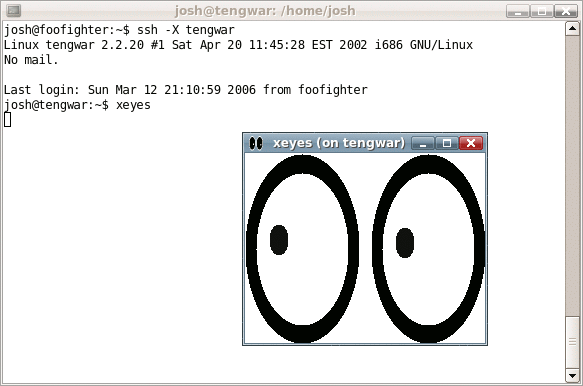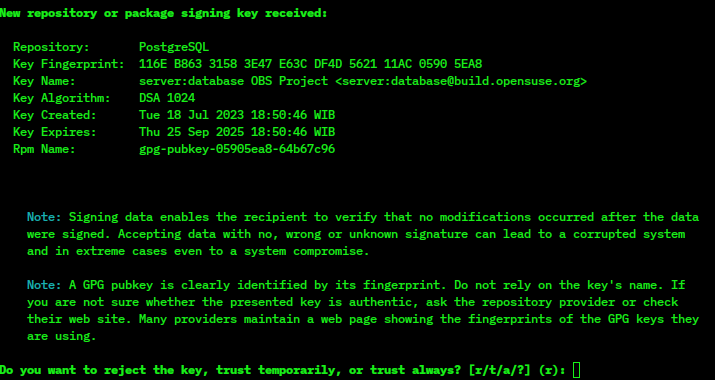|
Privacy Software
Privacy software, also called privacy platform, is software built to protect the privacy of its users. The software typically works in conjunction with Internet usage to control or limit the amount of information made available to third parties. The software can apply encryption or filtering of various kinds. Types of protection Privacy software can refer to two different types of protection. The first type is protecting a user's Internet privacy from the World Wide Web. There are software products that will mask or hide a user's IP address from the outside world to protect the user from identity theft. The second type of protection is hiding or deleting the user's Internet traces that are left on their PC after they have been surfing the Internet. There is software that will erase all the user's Internet traces and there is software that will hide and (Encrypt) a user's traces so that others using their PC will not know where they have been surfing. Whitelisting and blacklist ... [...More Info...] [...Related Items...] OR: [Wikipedia] [Google] [Baidu] |
Computer Software
Software consists of computer programs that instruct the Execution (computing), execution of a computer. Software also includes design documents and specifications. The history of software is closely tied to the development of digital computers in the mid-20th century. Early programs were written in the machine language specific to the hardware. The introduction of high-level programming languages in 1958 allowed for more human-readable instructions, making software development easier and more portable across different computer architectures. Software in a programming language is run through a compiler or Interpreter (computing), interpreter to execution (computing), execute on the architecture's hardware. Over time, software has become complex, owing to developments in Computer network, networking, operating systems, and databases. Software can generally be categorized into two main types: # operating systems, which manage hardware resources and provide services for applicat ... [...More Info...] [...Related Items...] OR: [Wikipedia] [Google] [Baidu] |
UProxy
uProxy was an extension for Chrome and Firefox, which allowed users to access the Internet via a web proxy. This project has been superseded by Outline VPN. The extension works by enabling a user to share their Internet connection with someone else. Google Ideas provided funding for the development which was carried out by the University of Washington and Brave New Software — the same organization behind the anti-censorship tool Lantern. The extension is intended to allow users to get more secure access to the Internet without being monitored. It is free/libre software under Apache license 2.0. The software has been discontinued, stating on their website " uProxy was an open source project led by the University of Washington and seeded by Jigsaw. Although the project is no longer supported, the code is still available on GitHub." See also * Great Firewall of China The Great Firewall (GFW; ) is the combination of legislative actions and technologies enforced by the People' ... [...More Info...] [...Related Items...] OR: [Wikipedia] [Google] [Baidu] |
Tor (anonymity Network)
Tor is a free overlay network for enabling anonymous communication. It is built on free and open-source software run by over seven thousand volunteer-operated relays worldwide, as well as by millions of users who route their Internet traffic via random paths through these relays. Using Tor makes it more difficult to trace a user's Internet activity by preventing any single point on the Internet (other than the user's device) from being able to view both where traffic originated from and where it is ultimately going to at the same time. This conceals a user's location and usage from anyone performing network surveillance or traffic analysis from any such point, protecting the user's freedom and ability to communicate confidentially. History The core principle of Tor, known as onion routing, was developed in the mid-1990s by United States Naval Research Laboratory employees, mathematician Paul Syverson, and computer scientists Michael G. Reed and David Goldschlag, to p ... [...More Info...] [...Related Items...] OR: [Wikipedia] [Google] [Baidu] |
Secure Shell
The Secure Shell Protocol (SSH Protocol) is a cryptographic network protocol for operating network services securely over an unsecured network. Its most notable applications are remote login and command-line execution. SSH was designed for Unix-like operating systems as a replacement for Telnet and unsecured remote Unix shell protocols, such as the Berkeley Remote Shell (rsh) and the related rlogin and rexec protocols, which all use insecure, plaintext methods of authentication, like passwords. Since mechanisms like Telnet and Remote Shell are designed to access and operate remote computers, sending the authentication tokens (e.g. username and password) for this access to these computers across a public network in an unsecured way poses a great risk of 3rd parties obtaining the password and achieving the same level of access to the remote system as the telnet user. Secure Shell mitigates this risk through the use of encryption mechanisms that are intended to hide th ... [...More Info...] [...Related Items...] OR: [Wikipedia] [Google] [Baidu] |
Pretty Good Privacy
Pretty Good Privacy (PGP) is an encryption software, encryption program that provides cryptographic privacy and authentication for data communication. PGP is used for digital signature, signing, encrypting, and decrypting texts, Email, e-mails, files, directories, and whole disk partitions and to increase the security of e-mail communications. Phil Zimmermann developed PGP in 1991. PGP and similar software follow the OpenPGP standard (RFC 4880), an open standard for encryption, encrypting and decrypting data. Modern versions of PGP are interoperability, interoperable with GnuPG and other OpenPGP-compliant systems. The OpenPGP standard has received criticism for its long-lived keys and the difficulty in learning it, as well as the EFAIL, Efail security vulnerability that previously arose when select e-mail programs used OpenPGP with S/MIME. The new OpenPGP standard (RFC 9580) has also been criticised by the maintainer of GnuPG Werner Koch, who in response created his own speci ... [...More Info...] [...Related Items...] OR: [Wikipedia] [Google] [Baidu] |
Portable Firefox
Mozilla Firefox, Portable Edition (formerly known as Portable Firefox and commonly known as Firefox Portable) is a repackaged version of Mozilla Firefox created by John T. Haller. The application allows Firefox to be run from a USB flash drive, CD-ROM, or other portable device on any Windows computer or Linux/ Unix computer running Wine. The program does not require Firefox to be installed on the computer, nor does it leave personal information on the computer or interfere with any installed versions of Firefox, however, installation on the computer's data storage device is possible. The program is not totally portable; it cannot run multiple instances of Firefox out of the box. It is compatible with Windows 7, Windows 8, Windows 10, Windows 11 as well as Wine on Unix-like systems. Although recent versions have serious compatibility issues with WinPE XP and BartPE XP, the old version 2.0.0.20 is compatible with Windows 98, Me, and PE XP and 2000. Differences from Mozilla ... [...More Info...] [...Related Items...] OR: [Wikipedia] [Google] [Baidu] |
Pretty Easy Privacy
pretty Easy privacy (p≡p or pEp) was a pluggable data encryption and verification system that provided automatic cryptographic key management through a set of libraries for written digital communications. It existed as a plugin for Microsoft Outlook and Mozilla Thunderbird as well as a mobile app for Android and iOS. p≡p also worked under Microsoft Windows, Unix-like and Mac OS X operating systems. Its cryptographic functionality was handled by an open-source p≡p engine relying on already existing cryptographic implementations in software like GnuPG, a modified version of netpgp (used only in iOS), and (as of p≡p v2.0) GNUnet. pretty Easy privacy was first released in 2016. It is a free and open-source software. p≡p was advertised as being easy to install, use, and understand. p≡p did not depend on any specific platform, message transport system (SMS, email, XMPP, etc.), or centrally provided client–server or "cloud" infrastructures; p≡p is fully peer-to-peer ... [...More Info...] [...Related Items...] OR: [Wikipedia] [Google] [Baidu] |
NetShade
NetShade is an app for Mac OS X and iOS which provides access to anonymous proxy and VPN servers. These servers include public HTTP/HTTPS proxies, as well as Rayner Software's own subscription-based proxies. NetShade's VPN servers run IPSec, and the proxy servers act using the HTTP/HTTPS web proxy standard. History NetShade version 1.0 was released in 2004 for Mac OS X. The first version had no subscription-based proxy service, only a listing of public proxies. A dedicated NetShade proxy server was added for version 2.0 in 2005. Version 3, released in 2007, added a second NetShade proxy server, providing presence in both the US and UK. The current version, 7.0.1, includes dedicated proxy servers in the US, Canada, UK, Czech Republic, Germany, France, Italy, and the Netherlands , Terminology of the Low Countries, informally Holland, is a country in Northwestern Europe, with Caribbean Netherlands, overseas territories in the Caribbean. It is the largest of the four c ... [...More Info...] [...Related Items...] OR: [Wikipedia] [Google] [Baidu] |
GNU Privacy Guard
GNU Privacy Guard (GnuPG or GPG) is a free-software replacement for Symantec's cryptographic software suite PGP. The software is compliant with the now obsoleted , the IETF standards-track specification of OpenPGP. Modern versions of PGP are interoperable with GnuPG and other OpenPGP v4-compliant systems. November 2023 saw two drafts aiming to update the 2007 OpenPGP v4 specification (RFC4880), ultimately resulting in thRFC 9580standard in July 2024. The proposal from the GnuPG developers, which is called LibrePGP, was not taken up by the OpenPGP Working Group and future versions of GnuPG will not support the current version of OpenPGP. GnuPG is part of the GNU Project and received major funding from the German government in 1999. Overview GnuPG is a hybrid-encryption software program because it uses a combination of conventional symmetric-key cryptography for speed, and public-key cryptography for ease of secure key exchange, typically by using the recipient's publi ... [...More Info...] [...Related Items...] OR: [Wikipedia] [Google] [Baidu] |
Privacy-enhancing Technologies
Privacy-enhancing technologies (PET) are technologies that embody fundamental data protection principles by minimizing personal data use, maximizing data security, and empowering individuals. PETs allow online users to protect the privacy of their personally identifiable information (PII), which is often provided to and handled by services or applications. PETs use techniques to minimize an information system's possession of personal data without losing functionality. Generally speaking, PETs can be categorized as either hard or soft privacy technologies. Goals of PETs The objective of PETs is to protect personal data and assure technology users of two key privacy points: their own information is kept confidential, and management of data protection is a priority to the organizations who hold responsibility for any PII. PETs allow users to take one or more of the following actions related to personal data that is sent to and used by online service providers, merchants or other ... [...More Info...] [...Related Items...] OR: [Wikipedia] [Google] [Baidu] |
Privacy Engineering
Privacy engineering is an emerging field of engineering which aims to provide methodologies, tools, and techniques to ensure systems provide acceptable levels of privacy. Its focus lies in organizing and assessing methods to identify and tackle privacy concerns within the engineering of information systems. In the US, an acceptable level of privacy is defined in terms of compliance to the functional and non-functional requirements set out through a privacy policy, which is a contractual artifact displaying the data controlling entities compliance to legislation such as Fair Information Practices, health record security regulation and other privacy laws. In the EU, however, the General Data Protection Regulation (GDPR) sets the requirements that need to be fulfilled. In the rest of the world, the requirements change depending on local implementations of privacy and data protection laws. Definition and scope The definition of privacy engineering given by National Institute of ... [...More Info...] [...Related Items...] OR: [Wikipedia] [Google] [Baidu] |



